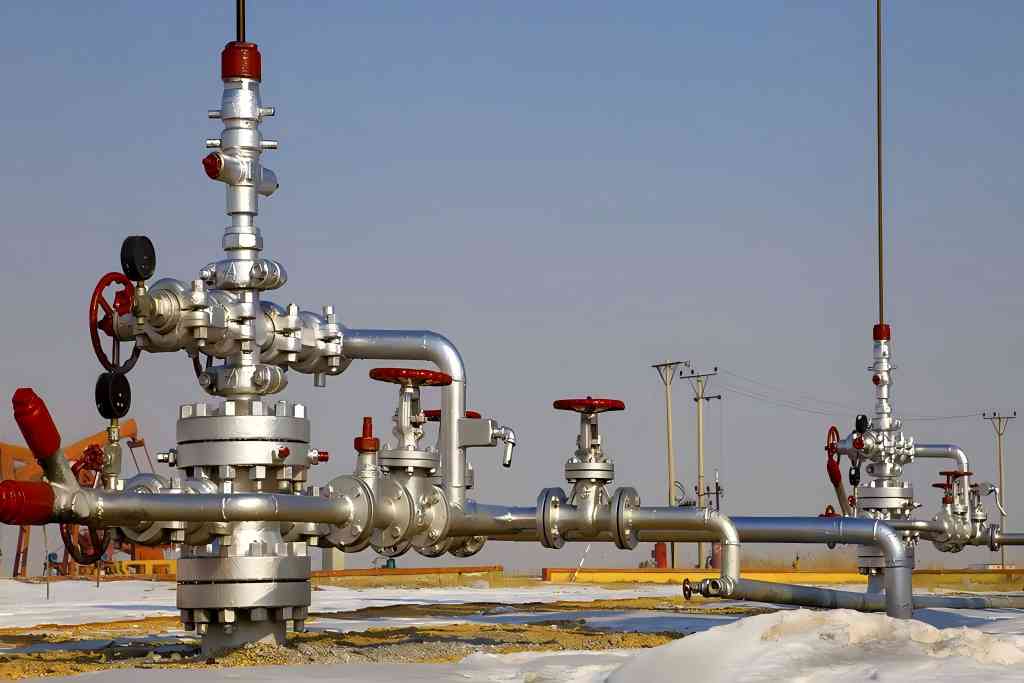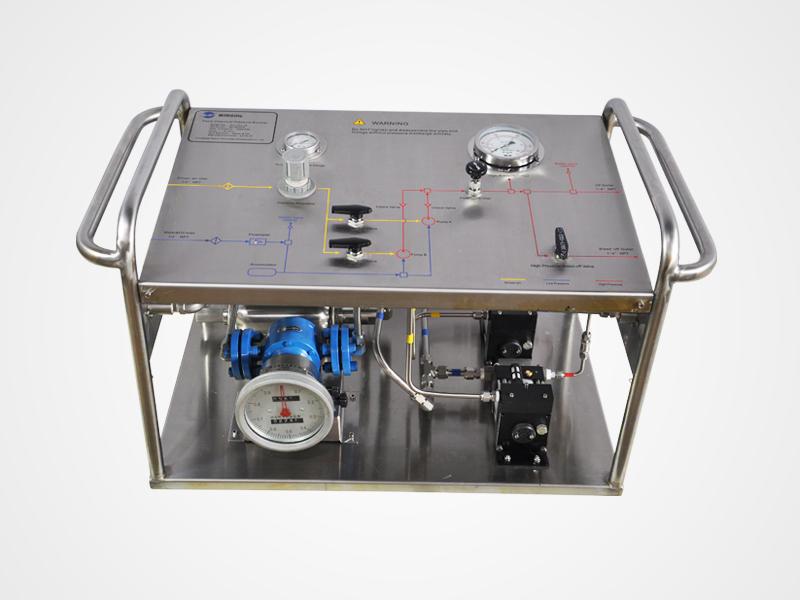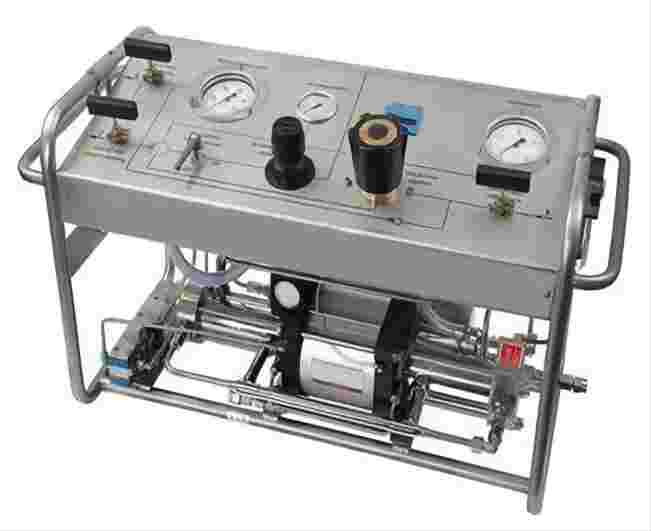How Hydrostatic Test Pumps Ensure Safety and Integrity in the Gas and Oil Industry?
The gas and oil industry plays a vital role in powering our world, but it also operates within a framework of high-pressure environments. This necessitates stringent safety measures to protect workers, the environment, and surrounding communities. Hydrostatic testing is one crucial tool employed in this industry to ensure the integrity and safety of pipelines, storage tanks, and other pressure vessels.
This article delves into the world of hydrostatic test pumps, exploring the essential safety precautions that must be adhered to during their use, and highlighting their importance in upholding safety and regulatory compliance within the gas and oil industry.
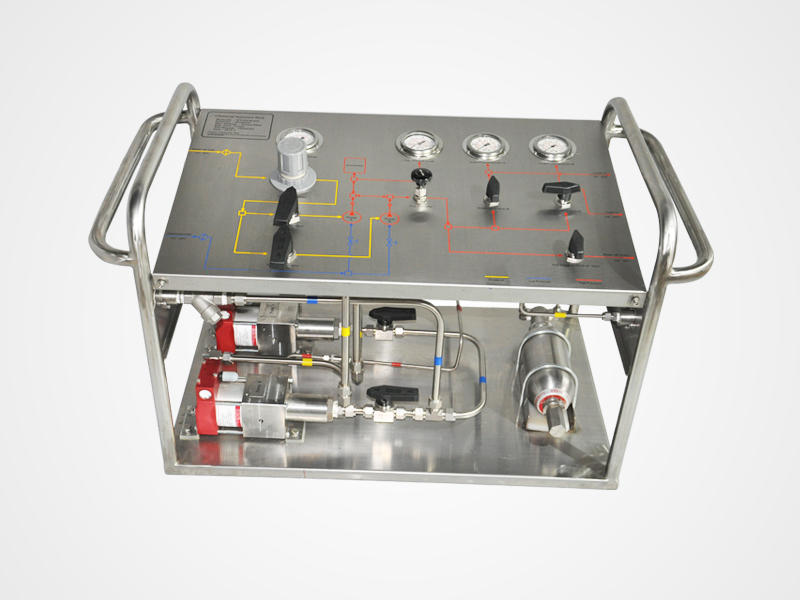
The Function of Hydrostatic Test Pumps
Hydrostatic test pumps are specialized equipment designed to generate high-pressure fluids, typically water, to test the structural integrity of pressure vessels. These pumps operate by applying controlled pressure to the system being tested, simulating the pressure it will encounter during actual operation. Any weaknesses or leaks within the system will be revealed at this elevated pressure, allowing for timely repairs and ensuring safe operation.
The specific type of hydrostatic test pump employed depends on the size and pressure requirements of the system being tested. Electric pumps offer high power output and are suitable for large-scale applications, while hand-operated models provide portability and are often used for smaller systems or field applications. Regardless of the pump type, safety remains paramount throughout the testing process.
Essential Precautions for Hydrostatic Testing
The high pressures involved in hydrostatic testing necessitate a strict adherence to safety protocols. By implementing these safeguards, personnel involved in the testing process can significantly reduce the risk of accidents and injuries. Here are some key safety precautions that must be followed meticulously:
- Pre-Use Inspection: Before ever initiating a test, a thorough inspection of the pump and accessories is mandatory. This includes diligently checking for any leaks, damage, or malfunctioning components. Specifically, ensure that the pressure gauge and relief valve are calibrated and functioning correctly. A faulty gauge or an inoperable relief valve can compromise the safety of the entire operation.
- Personal Protective Equipment (PPE): Individuals involved in the testing process must prioritize their personal safety by wearing appropriate Personal Protective Equipment (PPE) at all times. This essential gear typically includes safety glasses, gloves, and long-sleeved clothing to protect against potential splashes, pressurized fluid bursts, or flying debris. For high-pressure applications, consider utilizing a face shield or splash guard for additional protection.
- System Preparation: Before applying pressure, it is crucial to verify that the system being tested can withstand the intended test pressure without compromising its integrity. This involves meticulously checking all connections to ensure they are securely tightened and free of leaks. Additionally, purge any air trapped within the system before initiating pressurization, as air pockets can create unpredictable pressure fluctuations and pose safety risks.
- Pressure Control: During the testing process, it is critical to increase the pressure gradually and systematically according to established procedures. Never exceed the designated test pressure limit for the system being tested, as exceeding this limit can lead to catastrophic failure. Continuously monitor the pressure gauge throughout the test and be prepared to release pressure rapidly using the designated pressure relief valve if necessary.
- Post-Test Procedures: Once the testing process is complete, pressure release must be conducted in a slow and controlled manner. Avoid sudden depressurization, as this can cause rapid system contraction and pose safety hazards. After releasing pressure, meticulously inspect the system for any leaks or damage before disconnecting the pump. Finally, follow established protocols for the proper disposal of any used test fluid to minimize environmental impact.

The Importance of Hydrostatic Testing in the Gas and Oil Industry
Hydrostatic testing goes beyond simply identifying leaks and weaknesses in pressure vessels. It plays a critical role in upholding safety within the gas and oil industry by providing several fundamental benefits:
1. Identifying and Mitigating Risks
Hydrostatic testing serves as a crucial preventative measure. By subjecting pressure vessels to controlled and elevated pressure, it helps to identify and address any potential issues before they escalate into major incidents. Leaks, cracks, or weaknesses within the system will become readily apparent during the testing process, enabling timely repairs and corrective actions to be taken. This proactive approach significantly reduces the risk of accidents and injuries that could occur during actual operation if these weaknesses remained undetected. Furthermore, by preventing potential leaks and spills, hydrostatic testing safeguards against the release of hazardous materials into the environment, minimizing environmental damage and protecting surrounding communities.
2. Adhering to Industry Standards
The gas and oil industry operates within a framework of stringent regulations and safety standards established by industry bodies. Hydrostatic testing plays a vital role in ensuring compliance with these regulations. By conducting these tests regularly and following established procedures, companies demonstrate their commitment to upholding the highest safety standards and minimizing potential environmental impact.
3. Ensuring Reliable Operations and Cost-Effectiveness
Beyond its primary safety function, hydrostatic testing also contributes to maintaining reliable operations and cost-effectiveness within the gas and oil industry. By identifying and addressing potential issues early on, companies can prevent costly downtime, repairs, and replacements that would occur if undetected weaknesses led to failures during operation. Additionally, regular hydrostatic testing helps to extend the lifespan of pressure vessels by preventing unnecessary wear and tear caused by undetected leaks or cracks. This promotes responsible asset management and reduces the overall operational costs associated with maintaining and replacing equipment.
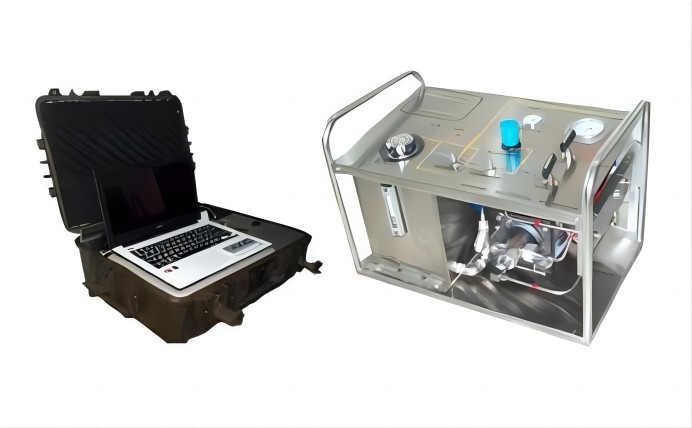
Conclusion
Hydrostatic test pumps, when utilized with meticulous safety protocols, play a vital role in ensuring the continued safe and efficient operation of the gas and oil industry. By prioritizing safety throughout the testing process, companies and individuals involved in this sector can significantly mitigate risks and protect workers, the environment, and surrounding communities. Implementing and adhering to these safety protocols remain a shared responsibility, with both companies and personnel playing a crucial role in maintaining a culture of safety and responsible practices within the industry.


